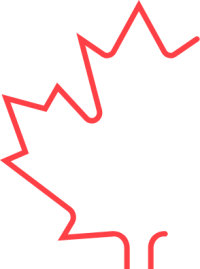Tracking medical equipment utilization is crucial for ensuring patient safety, cost efficiency, regulatory compliance, and operational efficiency in healthcare facilities. At Grand River Hospital, tracking the medical device utilization and scheduling maintenance of devices in the community demands substantial resources to provide quality care to patients. In the renal unit at Grand River Hospital, the specific challenges are tracking device utilization, sanitization cycles, patient therapy prescription adherence, tracking and ordering medical supplies, and scheduling equipment maintenance. The precise location and availability of specialized equipment, such as dialysis machines, pumps, and monitoring devices, are crucial for patient safety and treatment outcomes. Misused or malfunctioning equipment can lead to delays in treatment, complications, and even mortality. Grand River Hospital seeks to implement an innovative medical equipment tracking solution to address these challenges.
Grand River Hospital is posting this Call for Innovation to seek out qualified Canadian companies who can meet the following desired outcomes. Grand River Hospital and CAN Health reserves the right to not move forward with this project at its full discretion and in particular if there are no qualified Canadian companies that can reasonably meet the desired outcomes.
To qualify for a CAN Health project, the company must meet ALL of the following criteria:
- Headquartered in Canada (additional criteria apply for companies not headquartered in Canada)
- Majority ownership of both the company and the solution by Canadians
- Solution at Technology Readiness Level (TRL)>7, indicating actual technology completed and qualified through tests and demonstrations
- All the data and AI models (if applicable) must be hosted in Canada and comply with all the Canadian privacy regulations
- Possess all regulatory approvals required for commercialization, such as Health Canada approval
- Completion of all required clinical validity/unity studies
- No need for policy changes to be widely adopted
- Strong use cases in the Canadian health care system
If the company is not headquartered in Canada or the solution is not majority owned by Canadians, additional criteria apply:
- Independent autonomy over business operations and product development (for subsidiaries, affiliates or distributors)
- High Canadian job creation potential, especially in executive and senior management positions
- Commitment of over 70% of contract value to Canada
During the company selection process, preference is given to companies/solutions fully owned by Canadians, followed by those majority owned by Canadians, and finally international companies with a significant presence and economic impact in Canada.
For more information on the Call for Innovation process and the commercialization projects funded by CAN Health Network, please refer to the FAQ page on the CAN Health Network website: https://canhealthnetwork.ca/faq/
Problem Statement:
Grand River Hospital faces challenges in managing medical equipment utilization in the community, including remote asset utilization tracking (i.e., therapy cycle start and end alerts, blood pressure, and degreasing alerts), tracking device locations, ensuring timely maintenance alerts, prescription order alerts, and failure to adhere therapy treatment and sanitization alerts for early provider intervention. These issues place a significant strain on staff workload, hinder operational efficiency, and pose risks to patient care quality and safety. A critical gap exists in the ability to simultaneously track both asset utilization and location. The lack of integrated solutions that provide real-time visibility into equipment usage and precise location exacerbates inefficiencies, delays critical maintenance, and limits staff’s ability to allocate resources effectively.
Objectives:
Grand River Hospital is seeking a smart and intuitive tracking device within the renal program. This initiative aims to ease staff workload, enhance the efficiency of remote patient monitoring and asset utilization tracking, prevent theft and misplacement, and improve overall patient care. The solution must simultaneously track both utilization and location.
Essential (mandatory) outcomes:
Cost Savings
- Optimize medical inventory and supply chain management for improved efficiency.
- Minimize excess inventory and reduce reliance on emergency stock replenishment.
- Prevent losses due to misplaced or stolen medical equipment.
Time Savings
- Reduce the time staff spend to track asset utilization, location, and schedule maintenance of different assets.
- Streamline workflows by automating asset management tasks.
Quality Improvement
- Ensure timely access to critical medical equipment for patients.
- Improve patient care by tracking therapy adherence and sanitization cycles effectively.
- Enhance patient outcomes by automating medical supply refill notifications.
Return on Investment (ROI)
- Monitor asset utilization and sanitization cycles for home dialysis patients, sending timely alerts to staff to ensure proactive care and reduce hospital readmissions.
- Reallocate staff resources to focus on other critical hospital operations, improving overall productivity.
Simultaneous Utilization and Location Tracking
- The solution must have the capability to track both asset utilization and the precise location of medical equipment in real-time.
- This dual-tracking functionality is critical for ensuring timely maintenance, preventing misplacement, and optimizing resource allocation within the program.
Additional outcomes:
- Assess staff and patient experiences with a selected solution for tracking home medical device usage and managing customized device alerts.
- Evaluate the effectiveness of tracking devices in efficiently locating and monitoring tagged medical equipment.
- Determine the value of smart devices in tracking medical inventory and automating alerts for patient supply needs.
- Review staff feedback on the device’s ability to enhance asset utilization and streamline maintenance scheduling processes.
Efficient medical equipment utilization tracking is critical for enhancing patient care, regulatory compliance, and operational efficiency, particularly as healthcare delivery expands into community settings. In the Grand River Hospital Renal Program, these issues impact therapy compliance, maintenance scheduling, and patient safety. Ineffective tracking also leads to equipment shortages, financial losses, and logistical challenges, such as theft, misplacement, and maintaining loaned devices. By implementing smart technologies like IoT and AI-enabled tracking solutions, the hospital aims to improve remote patient monitoring, enhance equipment visibility, streamline operations, and set a standard for innovative healthcare asset management.

